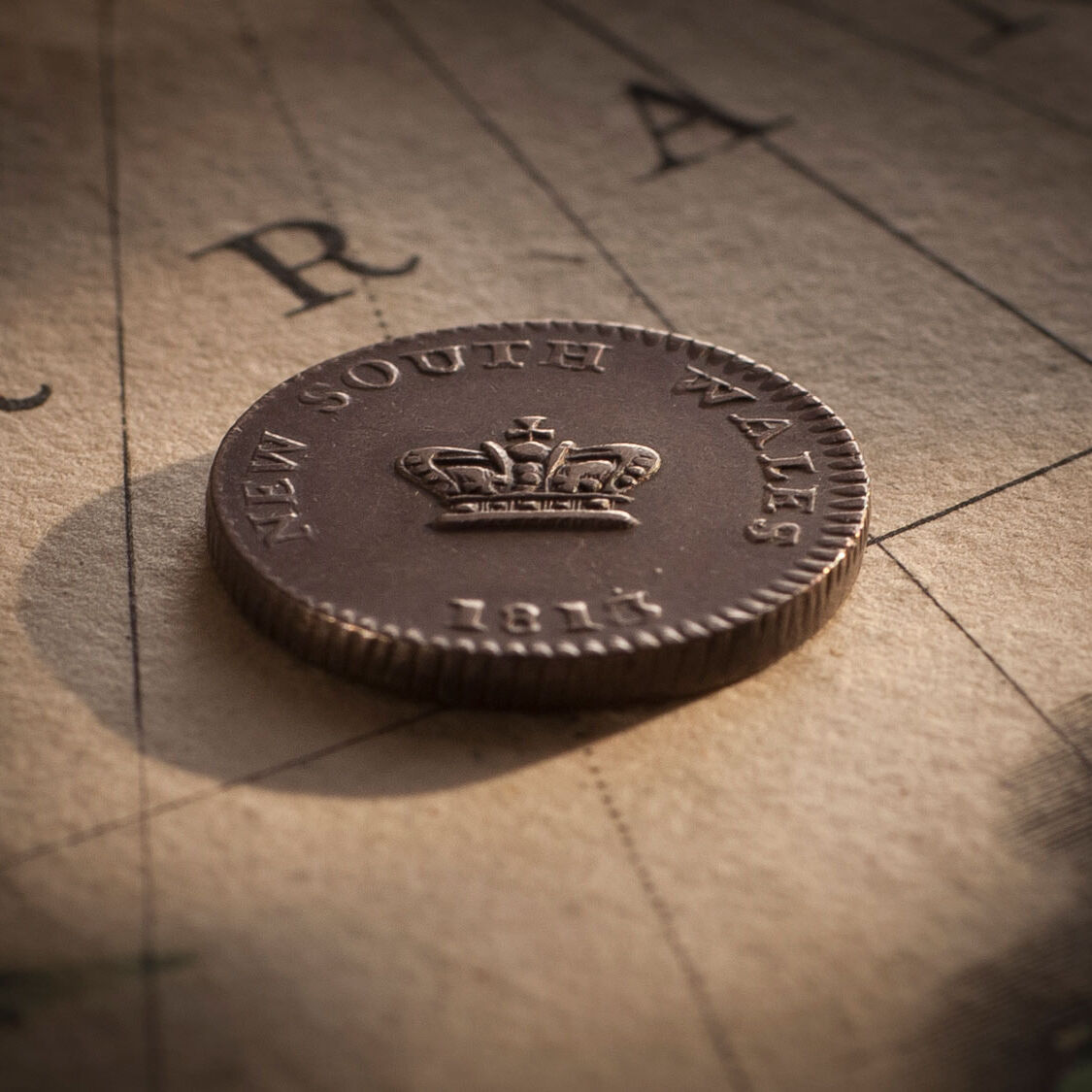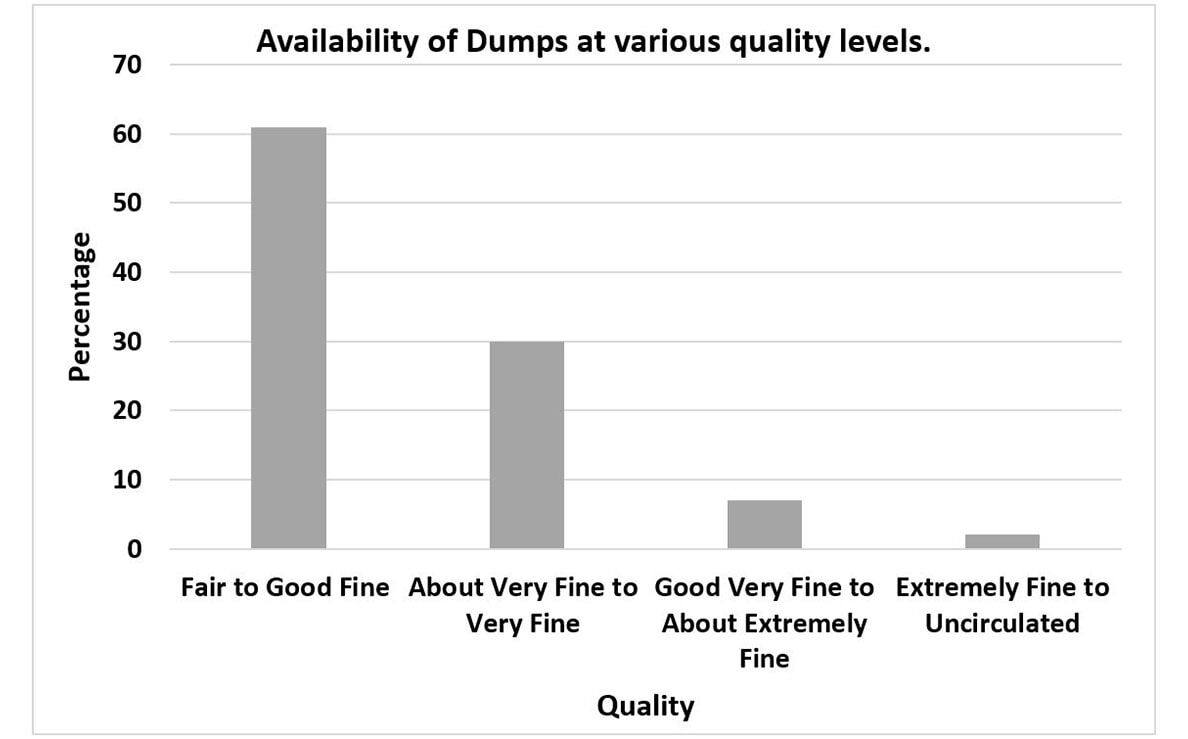1813 Dump, Type A/1 with super-smooth, highly reflective fields and handsome blue-grey toning.


The Holey Dollar and its partner the Dump were struck in 1813 under the directions of Governor Lachlan Macquarie to create a medium of exchange in the cash-starved penal colony of New South Wales.
They are much-lauded as the nation's first coins.
Macquarie enlisted the services of emancipated convict, William Henshall, to cut a hole in 40,000 Spanish Silver Dollars, creating two coins out of one: a donut shaped piece which became the Holey Dollar and a tiny central disc which became the Dump.
The Dump, the small disc that fell out of the centre of the holed silver dollar, was then over stamped with the date 1813, a crown, New South Wales and the value of fifteen pence.
The buyer that pursues a "top-quality" Dump will find the task extremely challenging. It can be years before a premium quality example comes onto the market.
The Dump circulated widely in the colony, the extreme wear on most Dumps evidence that they saw considerable use. So, while the Dump may seem the diminutive partner of the Holey Dollar, the reality is top quality Dumps have authority.
So, let's define the words "top quality" as far as the 1813 Dump is concerned and establish the point at which extreme rarity kicks in.
Every circulated coin has a grading level at which serious rarity kicks in. That is the point at which the balance between acquiring a coin as a collectible - and as an investment - shifts more towards the latter.
For the 1813 Colonial Dump that point is Good Very Fine.
The chart clearly shows that securing a Colonial Dump in a quality level of Good Very Fine or better is a difficult task. We would sight a Good Very Fine Dump on the open market perhaps once or twice every year.
Ray Jewell certainly knew what he was doing when he selected this 1813 Dump. It is a beauty.
- The design is classically well centred and well struck.
- The fields are smooth and highly reflective, toned to a handsome pale blue/grey.
- The legend New South Wales and the date 1813 are sharp.
- The fleur de lis on the left-hand side and the right-hand side of the crown have definition and have not melded into the coin.
- The pearls to the left and right of the crown are well defined and again have not melded into the coin.
- Notice the oblique milling around the edge. Strong, well defined and fully evident.
- The reverse Fifteen Pence also is strong and three dimensional.
- The ‘H’ for Henshall is well defined. William Henshall declared his involvement in the creation of the Dump by inserting an H into some (but not all) of the dies used during its striking. Its presence is highly prized.
- While the Holey Dollar glaringly shows that it is one coin struck from another, in a less obvious way so too does the Dump. The design detail of the original Spanish Dollar from which this Dump was created is evident on the reverse. We refer to it as the under-type and its presence is again highly prized.

© Copyright: Coinworks
